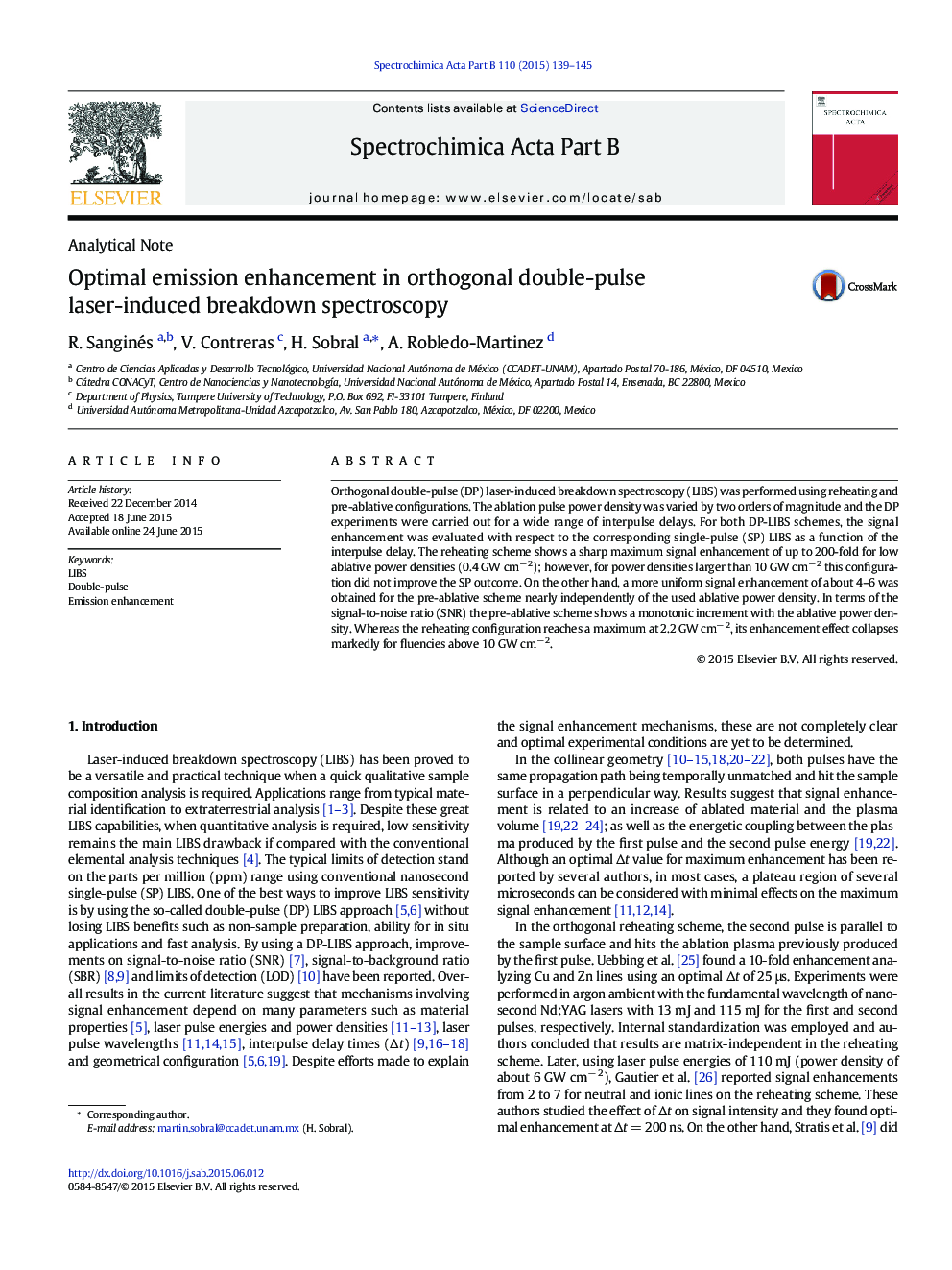| Article ID | Journal | Published Year | Pages | File Type |
|---|---|---|---|---|
| 1239988 | Spectrochimica Acta Part B: Atomic Spectroscopy | 2015 | 7 Pages |
•Comparison of reheating and pre-ablative double-pulse LIBS was done using a wide range of ablation power densities.•Experimental parameters that could achieve optimal signal-to-noise ratio were investigated.•A reheating scheme is better for low-ablation power densities.•A pre-ablative configuration is better for high-ablation power densities.
Orthogonal double-pulse (DP) laser-induced breakdown spectroscopy (LIBS) was performed using reheating and pre-ablative configurations. The ablation pulse power density was varied by two orders of magnitude and the DP experiments were carried out for a wide range of interpulse delays. For both DP-LIBS schemes, the signal enhancement was evaluated with respect to the corresponding single-pulse (SP) LIBS as a function of the interpulse delay. The reheating scheme shows a sharp maximum signal enhancement of up to 200-fold for low ablative power densities (0.4 GW cm− 2); however, for power densities larger than 10 GW cm− 2 this configuration did not improve the SP outcome. On the other hand, a more uniform signal enhancement of about 4–6 was obtained for the pre-ablative scheme nearly independently of the used ablative power density. In terms of the signal-to-noise ratio (SNR) the pre-ablative scheme shows a monotonic increment with the ablative power density. Whereas the reheating configuration reaches a maximum at 2.2 GW cm− 2, its enhancement effect collapses markedly for fluencies above 10 GW cm− 2.
